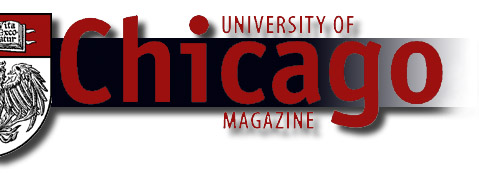 |

Gang
economics
It's not every
economist who decides to tackle the topic of urban youth's involvement
with gangs and drugs. Yet, says Steven Levitt, assistant professor
in economics and the College, "crime is an extremely important issue
and one that is really not studied enough, especially in academe-an
economist might have something interesting to say."
As gang-related
juvenile crime has increased during the past 15 years, Levitt explains,
it has affected both participants' employment rates in the legitimate
sector and the overall economic infrastructure of certain neighborhoods
of big cities like Chicago, New York, and Los Angeles.
In 1997, Levitt,
now 31, and Harvard sociologist Sudhir A. Venkatesh, AM'92, PhD'97,
combined their quantitative and qualitative analytical skills to
study the finances of street gangs. Their recent paper, presented
in April at the U of C's Center for Race, Gender, and Politics,
explored the socioeconomic structure of an inner-city, African-American
gang. They found that, contrary to public perceptions, few gang
members pocket lots of money. Indeed, says Levitt, the gang members
could not make a living off their profits from drug sales alone.
Over a four-year
period in the late 1980s and early 1990s, a former gang member,
who now works in the legitimate business sector, kept careful records
of his gang's profits, passing the information to Venkatesh on looseleaf
sheets copied from the gang ledger. Levitt then created an economic
model based on the gang's general expenses and its revenue from
drug dealing and membership dues. For safety reasons, Levitt and
Venkatesh chose to keep confidential their sources and the now-defunct
gang's whereabouts and members.
The focus gang
had a leader, three officers, about 75 foot soldiers, and some 200
rank-and-file individuals. The gang leader pocketed a documented
average of $100,000 a year. Officers, who managed gang funds and
drug operations, received an average of $1,000 a month, says Levitt,
while the foot soldiers, the equivalent of part-time workers, earned
no more than minimum wage selling drugs on the streets. Rank-and-file
individuals, the freelancers of the drug world, did sporadic drug
dealing for the gang.
During a profitable
period, each gang member's earnings increased, and during times
of infighting or gang wars, the foot soldiers got a boost in salary
for the same amount of work. This cause-and-effect relationship
in the gang's pay scales fits perfectly with an economic theory
called compensating differentials, says Levitt. According to this
theory, when a worker exerts more effort, or has to work with higher-than-usual
risks, the worker will be compensated for the added labor and risk-taking.
Another economic
theory, called tournament economics, became apparent during interviews
with members of the focus gang about why they stayed in the group.
Each member had a chance-albeit a small one-to become the gang leader,
the person who takes the lion's share of the gang profits. Such
a "tournament" situation, explains Levitt, emphasizes risk-taking
for the chance of financial gain.
Levitt plans
to do further multi-disciplinary research on gangs and crime, focusing
on school-age children in Chicago and the socioeconomic factors
that lead to gang alliance. "I think we are just getting started,"
Levitt says. "This financial data has raised a lot of questions
on why people join gangs, since it is not that lucrative."-P.J.A.
|



